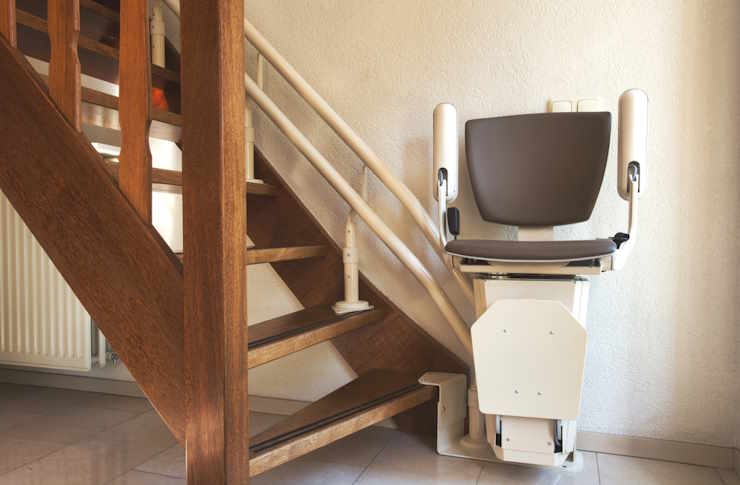Public housing for seniors over 60 for rent in United Kingdom: a guide
Public housing for people over 60 represents an accessible housing solution in United Kingdom that combines stability and age-appropriate services. This guide outlines the main eligibility requirements, explains the application process, and describes the most common accessibility and support features. It also presents housing alternatives that can improve your chances of finding suitable housing.

Public housing for seniors in the United Kingdom offers a vital housing solution for those aged 60 and above seeking affordable, accessible accommodation with appropriate support services. These housing options are designed specifically to meet the changing needs of older adults while promoting independence and community connection. This comprehensive guide explores the eligibility criteria, application procedures, and features of public housing for seniors across the UK.
What are the requirements for accessing public housing for the elderly?
To access public housing for seniors in the United Kingdom, applicants must meet several key eligibility criteria. The primary requirement is age—typically 60 or 65 years, though this can vary by local authority. Income and asset thresholds also apply, as these accommodations are intended for those with limited financial resources. Most councils operate a points-based or banding system that prioritizes applicants based on current housing conditions, health needs, and local connections.
Priority is often given to seniors with specific health conditions, mobility issues, or those currently living in unsuitable accommodation. Some schemes require applicants to have a connection to the local area, such as having lived or worked there for a specified period. Many local authorities maintain separate waiting lists for senior-specific housing, which may have shorter waiting times than general public housing.
Documentation requirements typically include proof of identity, age, income, savings, current housing situation, and medical needs where applicable. Most councils now offer online application systems, though paper applications remain available for those without digital access.
What are the main steps in the rental application process?
The application process for senior public housing in the UK follows a structured pathway. The first step involves contacting your local council’s housing department to register your interest and determine eligibility. Many councils require completion of a housing needs assessment, which evaluates your current living situation and specific requirements.
After registration, you’ll be placed on a waiting list according to your priority level. The waiting period varies significantly depending on location, with urban areas typically having longer lists than rural communities. During this time, it’s important to keep your application updated with any changes in circumstances, as these might affect your priority status.
When suitable accommodation becomes available, you’ll receive an offer to view the property. You typically have a limited time (usually 1-2 weeks) to accept or decline. Some systems allow for a certain number of refusals before affecting your position on the waiting list. Once you accept an offer, you’ll need to complete tenancy agreements, arrange for utility connections, and plan your move.
Some local authorities offer support services to help seniors through this process, including assistance with paperwork, property viewings, and moving arrangements. Housing associations and charitable organizations like Age UK also provide guidance through the application journey.
What are the accessibility features and integrated services?
Public housing for seniors in the UK incorporates numerous accessibility features and support services designed to accommodate changing needs. Most properties feature step-free access, wider doorways for wheelchair accessibility, grab rails in bathrooms, emergency call systems, and adapted kitchens with lower countertops. Many developments also include lifts to upper floors, non-slip flooring, and enhanced lighting systems.
Beyond physical adaptations, these housing options often integrate various support services. Many developments employ scheme managers or wardens who provide oversight and assistance during business hours. Some offer more comprehensive care packages that can include help with personal care, medication management, and domestic tasks. Community spaces like lounges, gardens, and dining areas promote social interaction and reduce isolation.
Transportation services are frequently available, connecting residents to local amenities, healthcare facilities, and community centers. Many developments organize regular social activities, from coffee mornings to exercise classes and day trips. Some more comprehensive housing schemes include on-site facilities such as hairdressing salons, shops, restaurants, and even healthcare services.
The level of care and support varies between sheltered housing (minimal support), extra care housing (medium support), and residential care (comprehensive support). This tiered approach allows seniors to choose the environment that best matches their current needs while providing pathways to increased support as circumstances change.
What costs are involved in senior public housing?
Public housing for seniors in the UK involves various costs that potential residents should consider when planning their move. Rent levels in these accommodations are typically lower than market rates but vary depending on location, property size, and the range of services provided.
| Housing Type | Average Weekly Rent | Service Charge Range | Additional Care Costs |
|---|---|---|---|
| Sheltered Housing | £85-£120 | £10-£30 | Usually not included |
| Extra Care Housing | £120-£200 | £30-£50 | £100-£400 per week |
| Almshouses | £70-£100 | Varies | Usually not included |
| Housing Association | £90-£150 | £15-£40 | Depends on services |
| Council Housing | £70-£110 | £10-£25 | Usually separate |
Prices, rates, or cost estimates mentioned in this article are based on the latest available information but may change over time. Independent research is advised before making financial decisions.
Beyond rent, residents typically pay service charges covering building maintenance, communal area cleaning, grounds upkeep, and scheme manager services. Utility costs may be included in some developments but are often separate. Council tax is usually payable, though many seniors qualify for reductions.
Financial assistance is available through Housing Benefit or the housing element of Universal Credit for those with limited income and savings. Some residents may also qualify for Attendance Allowance or Personal Independence Payment to help with care costs. Local authorities can provide means-tested support for care services through their social services departments.
How to prepare for moving into senior public housing
Preparing for a move to senior public housing requires careful planning and organization. Start by measuring your new space and determining which furniture and belongings will fit comfortably. Most senior accommodations are smaller than family homes, so downsizing is often necessary. Consider creating a floor plan to visualize furniture placement before moving day.
Notify relevant organizations about your change of address, including healthcare providers, government departments, utility companies, and financial institutions. Arrange for mail redirection through the Royal Mail service. If you’re receiving care services, coordinate with your current providers about transferring or ending these arrangements.
Familiarize yourself with the new neighborhood before moving, identifying nearby amenities such as shops, pharmacies, healthcare facilities, and public transport options. Many housing schemes offer pre-move visits to help you get acquainted with the property and meet neighbors or staff.
Consider practical support for the moving process itself. Friends and family can provide valuable assistance, but professional moving services specializing in senior relocations are also available. Some charitable organizations offer moving support for elderly individuals with limited resources or social networks.
After moving in, take time to learn about emergency procedures, how to use any specialized equipment like call systems, and the schedule of any regular activities or services. Introducing yourself to neighbors and participating in community events can help establish a sense of belonging in your new home.




